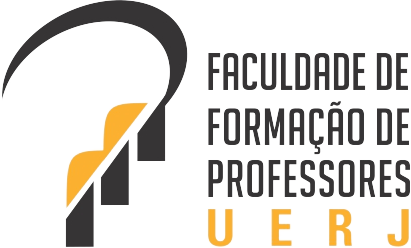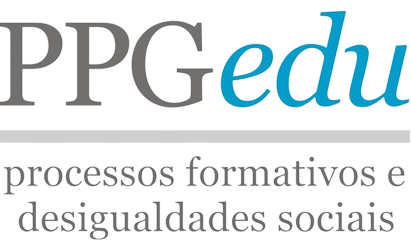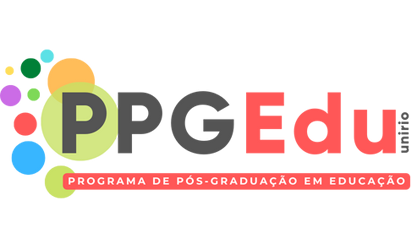O RACIOCÍNIO ALGÉBRICO E A FORMAÇÃO HÍBRIDA DE PROFESSORES QUE ENSINAM MATEMÁTICA: o poder dos símbolos
DOI:
https://doi.org/10.12957/riae.2023.70575Palabras clave:
Early Algebra, Símbolo, Formação Continuada de Professores, Intervenção de Ensino, Ensino HíbridoResumen
O presente artigo tem como objetivo analisar tarefas elaboradas por professores polivalentes no âmbito de um estudo que envolveu a formação continuada, para trabalhar conceitos algébricos elementares. O estudo se situa na interseção da Early Algebra, do Ensino Híbrido e da Formação de professores. Desenvolveu-se um curso de formação continuada para nove professoras que ensinam Matemática, nos Anos Iniciais do Ensino Fundamental, matriculadas em uma disciplina de um curso de mestrado em Educação de uma universidade pública do estado da Bahia. Para efeito deste artigo, a discussão centrou-se em um conceito fundamental para o estudo da Álgebra: o símbolo. Os dados foram produzidos em dois ambientes (AVA REPARE e sala de aula) e se compuseram de: fóruns de discussão, discussão na elaboração de situações-problema e exposições das situações. Os resultados apontam para as reflexões realizadas pelas professoras-cursistas, as quais conduziu para uma (trans)formação em suas práticas pedagógicas. A interatividade do AVA REPARE proporcionou uma pluralidade de dados, trocas de experiências e de ricas informações entre as professoras-cursistas. E, também, o estudo evidencia que o curso realizado mostrou ser um modelo rico e inovador para a formação em serviço de professores que atuam nessa etapa da Educação Básica.Citas
BACICH, L; MORAN, J. M. Aprender e ensinar com foco na educação híbrida. Revista Pátio, v. 17, n. 25, p. 45-47, 2015
BERGMANN, Jonathan; SAMS, Aaron. Sala de aula invertida: uma metodologia ativa de aprendizagem. Trad. Afonso Celso da Cunha Serra. Rio de Janeiro: LTC, 2016
BLANTON, M. L.; KAPUT, J. Characterizing a classroom practice that promotes algebraic reasoning. Journal for research in mathematics education, p. 412-446, 2005.
BLANTON, M.; SCHIFTER, D.; INGE, V.; LOFGREN, P.; WILLIS, C.; DAVIS F.; CONFREY, J. Early algebra. In KATZ, V. J. (Org.), Algebra: Gateway to an technological future. MAA Report p. 7-14. Washington, D.C.: The Mathematical Association of America, 2007
BORBA, M. C.; SCUCUGLIA, R. R. S; GADANIDIS, G. Fases das Tecnologias Digitais em Educação Matemática: sala de aula e internet em movimento. Autêntica, 2016.
BRASIL, Parâmetros Curriculares Nacionais. Matemática. Secretária de Educação Fundamental. Brasília: MEC/SEF, 1997.
______. Parâmetros Curriculares Nacionais. Matemática. Secretária de Educação Fundamental. Brasília: MEC/SEF, 1998
______. MINISTÉRIO DA EDUCAÇÃO. Elementos conceituais e metodológicos para definição dos direitos de aprendizagem e desenvolvimento do Ciclo de Alfabetização (1º, 2º e 3º anos) do Ensino Fundamental. 2012.
______. Ministério da Educação. Base nacional comum curricular. 3ª versão. Brasília: Ministério da Educação, 2017.
Facebook. MAT, Universo. A universalidade da Matemática. Facebook: universomat. 2018. Disponível em: <https://www.facebook.com/Universomat/videos/325000198027368/> . Acesso em 15 jun 2022.
FALKNER, Karen; LEVI, Linda; CARPENTER, Thomas. Early Childhood Corner: Children's Understanding of Equality: A Foundation for Algebra. Teaching children mathematics, v. 6, n. 4, p. 232-236, 1999.
FIORENTINI, D.; LORENZATO, S. Investigação em educação matemática: percursos teóricos e metodológicos. 3ª Ed.rev. Campinas, SP: Autores Associados, 2012.
HORN, M. B.; STAKER, H. Blended: usando a inovação disruptiva para aprimorar a educação. Penso Editora, 2015.
KAPUT, J. Teaching and learning a new Algebra with understanding. 1999
AUTOR 2. O computador como ferramenta na aquisição e desenvolvimento do conceito de ângulo em crianças. Recife, 1988.
AUTOR 2; AUTOR 1. O Raciocínio Algébrico no Ensino Fundamental: O debate a partir da visão de quatro estudos. Revista de Educação Matemática e Tecnológica Iberoamericana, v. 9, n. 1, p. 1-23, 2018. Disponível em: <https://doi.org/10.36397/emteia.v9i1.235070>. Acesso em 15 mai 2022.
MELO, H. S. Matemática: uma linguagem universal. Correio dos Açores, 2016.
MIRANDA, G. L. A linguagem logo no pré-escolar: Avaliação de alguns efeitos cognitivos decorrentes da actividade de programação. 1989. Tese de Doutorado. Faculdade de Psicologia e de Ciências da Educação, Universidade de Lisboa.
NATIONAL COUNCIL OF TEACHERS OF MATHEMATICS (Ed.). Princípios e Normas para a Matemática Escolar. National Council of Teachers of Mathematics, 2000.
AUTOR 1. FORMAÇÃO CONTINUADA DE PROFESSORES E A EARLY ALGEBRA: uma intervenção híbrida (dissertação). Ilhéus: UESC, 2018.
PIERCE, C. S. Semiótica. In: COELHO NETTO, J. T. Semiótica, informação e comunicação. São Paulo : Ed. Perspectiva, 1999. (Coleção Debates)
PONTE, J. P.; BRANCO, N.; MATOS, A. Álgebra no ensino básico. Lisboa: ME[1]DGIDC, 2009
RIBEIRO, E. S. Um estudo sobre o símbolo, com base na semiótica de Peirce. estudos semióticos, v. 6, n. 1, p. 46-53, 2010
RUDIO, F. V. Introdução ao projeto de pesquisa científica. 29 ed. Petrópolis: Vozes. 2001
SCHÄFER, P. B.; SPERB, B. F.; DA CRUZ FAGUNDES, L.. Squeak Etoys na modalidade 1 para 1: programação e autoria multimídia no desenvolvimento da conceituação. In: Anais do Workshop de Informática na Escola. 2011. p. 1226- 1235.
SCHLIEMANN, A. D. CAHARRER. D. W. O lugar da álgebra no Ensino Fundamental. In MARTINS, E. LAUTERT, S. (Orgs.). Diálogos sobre o ensino, a aprendizagem e a formação de professores: contribuições da Psicologia da Educação Matemática. Rio de Janeiro: Autografia, p.34-73, 2016
SILBERSCHATZ, C. Symbols. Early Algebra Resources. Medford, 2010
USISKIN, Z. Conceptions of school algebra and uses of variables. The ideas of algebra, K-12, v. 8, p. 19, 1988.
VALENTE, J. A. Questão do Software: parâmetros para o desenvolvimento de Software Educativo. Memos do NIED, v. 5, n. 24, 1989.
YAMANAKA, O.; AUTOR 2, S. Um estudo da “Early Algebra” sob a luz da Teoria dos Campos Conceituais de Gerard Vergnaud. In: Encontro Paulista De Educação Matemática, 9., 2008, Bauru. Anais. São Paulo: SBEM/SBEM-SP, 2008
Publicado
Cómo citar
Número
Sección
Licencia
Derechos de autor 2023 Revista Interinstitucional Artes de Educar

Esta obra está bajo una licencia internacional Creative Commons Atribución-NoComercial 4.0.
Los autores conservan los derechos de autor de su trabajo, pueden publicar y distribuir su trabajo en línea (por ejemplo, en repositorios institucionales o en su página personal) en cualquier momento antes o durante el proceso editorial, ya que esto puede generar cambios productivos, así como aumentar la impacto y citación del trabajo publicado.
La aceptación del texto implica la autorización y exclusividad de la Revista Interinstitucional Artes de Educar en cuanto al derecho de primera publicación, las obras publicadas son licenciadas simultáneamente con una Licencia Creative Commons Atribución-No Comercial 4.0 Internacional 























